- Home
- Nathaniel Philbrick
Away Off Shore: Nantucket Island and Its People, 1602-1890 Page 5
Away Off Shore: Nantucket Island and Its People, 1602-1890 Read online
Page 5
In the next several days, the English community on Nantucket went into mourning when it was realized that the canoe was never coming back. And then, after all had been given up for lost, Eleazer arrived on a sloop from Cape Cod and told his terrible story. Although not related by blood, Edward Starbuck, James Coffin, and particularly the Macy family must have felt a special bond to their former shipmate, Isaac Coleman. On a cold fall day almost a decade before, it could have just as easily happened to all of them.
CHAPTER 4
Tristram Coffin, Country Squire
TRISTRAM COFFIN appears to have been a more worldly man than either Thomas Macy or Edward Starbuck. There is no record of his religious affiliation, and when he and his wife ran into trouble with the Puritan government back in Newbury (just down the river from Macy’s Salisbury), it was not for lay-preaching but for beer-making. According to a law written in 1645, only four bushels of malt were to be used in brewing a beer that was to cost no more than two pence a quart. But at his inn in Newbury, Tristram charged an extra pence a quart, and in 1653 this put him afoul of the authorities. When it was disclosed that his wife Dionis had been using two extra bushels of malt to brew what was apparently a higher quality—and thus premium priced—beer, the case against her husband was dropped.
Even though they were exonerated in this instance, the Coffins did not take well to such governmental regulation, and thus they had a difficult time settling down in Puritan New England. After leaving behind a considerable estate in Brixton on the southeastern coast of Devonshire, the Coffins (who came to America with five young children, Tristram’s mother, and his two sisters) lived for a short time in Salisbury only to move to Haverhill, then on to Newbury, and then back to Salisbury in 1654, where Tristram and Dionis soon began to make plans for moving to Nantucket. Besides an inn, Coffin ran a ferry on the Newbury side of Carrs Island on the Merrimack River, but he never seems to have been very content with his position in Puritan New England. This sort of restlessness was not uncommon, particularly among those from the West Country of England. The power structure of Puritan New England was made up, for the most part, of people from the opposite side of the country in East Anglia, and “Westcountrymen” such as Coffin, from Devonshire, and Macy, from Wiltshire, often felt compelled to move elsewhere.
Unable to carve out a comfortable niche on the mainland, Coffin and his fellow “first purchasers” looked to Nantucket, an island under no colonial jurisdiction where they might create a community free from the religious and economic restrictions they had experienced in New England. Although it may have been Macy’s blood tie to Thomas Mayhew that initially got the ball rolling, it was Coffin who carried forward the actual negotiations that resulted in the purchase of the island in 1659. From the first, the Nantucket proprietary was structured differently from its counterparts on the mainland, where an individual’s wealth and rank usually had a direct relationship to the amount of land he received. On Nantucket, equal grants were given to the first purchasers and their partners, who included not only Tristram Coffin, Thomas Macy, Edward Starbuck, and Thomas Mayhew from the Vineyard (who maintained an interest in the island) but also Richard Swain, Thomas Barnard, Christopher Hussey, John Swain, William Pile, Thomas Coleman, Robert Barnard, Robert Pike, John Smith, Thomas Look, and a total of four Coffin sons and sons-in-law—Peter Coffin, James Coffin, Tristram Coffin, Jr., and Stephen Greenleaf. With control over five out of twenty initial shares in the proprietary, Coffin was clearly in the driver’s seat from the beginning.
But why Nantucket? Why did Tristram Coffin, at the age of fifty-four, with three children still living at home, decide to pin his hopes on an island almost thirty miles out to sea? First and foremost, it gave him a degree of control over his own and, most important, his children’s destinies that had been unavailable to him on the mainland. And yet, Coffin did not look to Nantucket out of a desperate need to escape Puritan New England; instead it marked the fulfillment of a carefully calculated plan to consolidate the gains he and particularly his eldest son Peter, a leading sawmill owner and lumber trader from Dover, New Hampshire, had already made in the Merrimack Valley region.
Although an island off the New England coast, Nantucket in the seventeenth century was far less remote than it would ultimately become in the nineteenth century when a burgeoning railroad system would knit together the interior of the country, isolating many hitherto prosperous island communities along the Atlantic coast. In 1660, and for the next century and a half, overland travel was extremely slow and difficult, with water travel being the preferred mode of transportation. Given this reality, the fact that Nantucket was surrounded by water actually worked to its advantage. But even more important than its relative ease of access was its lack of trees, providing a ready-made market for Peter Coffin’s lumber business. And sure enough, only a few years after Tristram’s arrival on the island, the town “agreed to allow Peter Coffin liberty to trade on [the] island at present and to prohibit all others.” Indeed, the town’s many early measures against the use of on-island trees may have been motivated by something more than a seventeenth-century concern for the island’s ecology.
Although Coffin was clearly in a position to exert control over the island proprietary, there was something of a wild card present on Nantucket in the form of a large Indian population. If Coffin was to build a community to his own specifications, he could only do it if the Indians allowed him to. So, in keeping with established practice in Massachusetts, Coffin and company were careful to purchase the land not only from Mayhew but also from the Indians. In the first deed signed by the sachems Wanackmamack (pronounced “Wan-ACK-ma-MACK”) and Nickanoose in May, 1660, the English land is described as “lying from the west end of the Island of Nantucket unto the pond called by the Indians Waqutaquaib [pronounced “Wa-KUTA-KABE”] and from the head of that pond upon a straight line unto the pond situated by the Monomoy harbor or creek now called Wherfore Creek and so from the northeast corner to the said pond to the sea. . . .” Today, Waqutaquaib is the first, lilychoked pond visible on the left as you begin a walk through the conservation land at Sanford Farm; although it is difficult to see the pond referred to in Monomoy from a public road, it still exists at the head of the Creeks not far from Our Island Home.
To a remarkable extent, these boundaries circumscribe what still is today the island’s population center. But whereas the modern-day town is oriented toward the harbor to the east, Nantucket’s first settlers looked to Cappamet Harbor at Capaum (pronounced “Ka-PAWM”) along the northern side of the island to the west. Before it was cut off from Nantucket Sound by a sandbar in the early eighteenth century (and became Capaum Pond), Cappamet Harbor provided the first settlers with a ready-made, relatively deep anchorage without the sandy beaches and mucky marshes that inhibited access to the larger harbor to the east. Wonderfully protected by the rolling hills that surround it, Cappamet also had the benefit of being situated in the geographic center (east to west) of the new settlement.
From the first, Coffin was careful to insure that he and his children were positioned here, at the center of the new community. While most proprietors were assigned their land “by casting lots,” Coffin laid claim to a prime spot at Capaum, where he built a house that he would later describe in a deed “as under the hill by the herb garden” on the western side of the harbor where it was well protected from the prevailing winds. With his eldest son Peter owning the land on the other side of the harbor, the Coffins were strategically located with regard to what would inevitably become the early commercial hub of the island.
The layout of house lots also worked to the Coffins’ advantage. Unlike the standard Puritan community on the mainland, in which relatively small plots of land were clustered around a centrally located green, the first house-lot division of July, 1661, contained plots of approximately twenty-one acres—four or five times the average lot size found in Massachusetts. The large size of these lots enabled Coffin to monopolize the area surrounding the h
arbor as the rest of the community settled in two lines curving out from Capaum. The first ran to the south toward the western arm of U-shaped Hummock Pond; the second ran eastward toward the “Great Harbor” at Wesco. While this layout gave each family plenty of elbow room—thus diffusing the meddling-neighbor syndrome of the usual, closely packed New England village—all roads along these two wings of settlement led to the Coffins at Capaum.
But if Nantucket was to remain a market for Peter Coffin’s lumber, there had to be a way for its inhabitants to make an adequate living, and here again, father Tristram did his best to give the English settlers every possible advantage. Throughout New England in the seventeenth century, islands were favored for sheep-raising since they were free of the wolves and other natural predators that ravaged flocks on the mainland. And in the first deed with the Indians in the spring of 1660, Coffin was careful to secure “free liberty for the feeding of all sorts of cattle on any part of the island after the Indian harvest is ended until planting time.” In other words, even though they initially owned only a small portion of the island, the English were free to use the entire island as common land for grazing from October until May.
As sheepherding emerged as the driving force behind the island’s economy, it quickly became apparent that this small, water-bound community had some gaps to fill. This led to the designation of fourteen additional “half-shares” in the proprietary to attract specific tradespeople to the island. As early as 1662 William Worth was brought on to be “employed in sea affairs”; in 1663 Peter Folger became the town’s Indian interpreter, surveyor, and miller; and in 1664 Thomas Macy, already a full-share man, took up the “trade of weaving” in exchange for an additional half-share accommodation. Although Worth was given a part in all future divisions of land, the proprietors were not so generous when it came to subsequent half-share men, limiting their future opportunities to acquire real estate to what was called the “first plantation.” As we shall see, the creation of what amounted to a form of second-class citizenship would come back to haunt Coffin and company in the years ahead.
As Nantucket’s population grew, so did the number of grazing animals, and the English quickly began to feel that the island was overstocked. In June of 1667 the “Vineyard men” were told to take their “horses, mares, and colts” off the island, and soon after, “finding by experience that horses are likely to be the ruin of the neat cattle,” Nantucketers limited themselves to one horse per household while prohibiting altogether the sale of horses to Indians. In 1668 the town established rules for the number of animals each shareholder was permitted to graze, with forty cattle and forty sheep designated for each full-share. Such rules, known as stinting rights, required the policing of the herd by the proprietors, and each shareholder was assigned his own earmark (Tristram Coffin’s was “a half-fork under the right ear and a half-penny under the left”) so that his livestock could be identified. If it was found that a shareholder was overstocking the common, his extra animals were confiscated, for which purpose the town ordered the building of an eighty-foot-square “pound” or pen “about Cappamet” with “sufficient good strong posts and five rails ten feet long and a cap on the top.”
Here at Capaum, Coffin did his best to re-create a New World version of his ancestral home in England where he had been a card-carrying member of the landed gentry. He soon named the pebbly beach beside his home “Northam” for a coastal village in his native Devon while the beach to the west of Capaum still bears the name of Coffin’s wife, Dionis. Without a church or town hall, public meetings were held in private homes, with Tristram Coffin’s large house beside the harbor commonly being used for court sessions and town meetings. Around 1677 he built a “new dwelling house upon the hill” overlooking his original home near the water’s edge.
Beyond the anchorage at Capaum, Wesco (later called Lily) Pond and its grist mill served as another important focal point, with the miller receiving two quarts for every bushel of milled grain as payment. Providing a glimpse into what this mill entailed is a reference in the town records to maintenance of the “water wheel” as well as “the running gears, the hollow tree at the pond, and the sluice at the head of the mill.” And when the management of the mill ran into problems, it was Tristram Coffin who took over its operation in 1672.
By that time, prices had been established on Indian corn (two shillings and eight pence per bushel), wheat (four shillings per bushel), barley (three shillings), and rye (three shillings). In 1678 twenty acres in the center of what is today’s town were subdivided into twenty very narrow strips (20 by 2 rods) known as the Wesco division. Rather than heralding the town’s eventual movement to the larger harbor to the east, the narrowness of the lots suggests that the division was intended for farming purposes only.
Along with farming and raising livestock, Nantucketers were kept busy raising large families—a process that eventually helped to fulfill Coffin’s early hopes for an island dynasty. The record (begun in 1662) shows that in the first fifteen years, there were only six deaths and seventy-four births on Nantucket. Among the first families on the island, Coffins contributed more than their share to the future generations. At his death in 1681, Tristram had seven children, sixty grandchildren, and several great-grandchildren. By 1728, 1,582 descendants had been born, of whom 1,128 were still alive throughout New England, a staggering number when we consider that in 1726 there were only 917 English people on all of Nantucket. No wonder, then, that in 1792 Zaccheus Macy referred to Tristram Coffin as “the old grandfather to almost all of us.”
If as patriarch of the island’s leading family Coffin sought to mold the future destiny of the community, there was one aspect of life on Nantucket that he apparently did not seek to control. Having experienced the intrusive influence of a Puritanrun government (from both a spiritual and an economic point of view), Coffin and company chose to avoid the issue of religion altogether. It would not be until the following century that an organized faith established a foothold in the English community, meaning that for close to fifty years the only churches on Nantucket were to be found among the Indians!
This is not to suggest that religion was unimportant to many English Nantucketers. Throughout the seventeenth century, islanders of similar beliefs conducted meetings in private homes, with people such as Thomas Macy, Edward Starbuck, and Peter Folger functioning as lay-preachers. However, virtually nowhere else in New England were people left to do as they pleased on Sunday, and this apparently left some Nantucketers with a little too much time on their hands. In 1680 a law was passed, “For the prevention of such misdemeanors which some take occasion to practice on the Lord’s Day by reason of absence of most people from their habitations and such temptations as vagrant persons are exposed to, thereby the court orders that no person present in Lord’s Day to be absent from their houses or usual places of abode. . . .”
Here, in this reference to “vagrant persons,” we may recognize the genesis of an ancient Nantucket term known as the “rantom scoot,” meaning a day’s “cruise” about the island with no definite purpose or destination. Without laws requiring them to attend a local Congregational church, Nantucketers seem to have created a less structured tradition of their own, in which it was common for people to wander freely about the island on a Sunday. And with laws severely limiting the number of horses on the island, seventeenth-century Nantucket was a place where everybody walked. (Indeed, it was no accident that three of the tradesmen who were invited to settle on the island listed shoe-making as one of their trades.) On Nantucket, even if you were not in the peak of health, you traveled by foot. According to one account of Peter Folger’s wife Mary, “she was a large fleshy woman, and . . . when she went to visit a neighbor . . . she had a chair carried for her to rest herself on the way.”
Apparently, however, by 1680 (if the above-quoted law is any indication), this island of rantom scooters was experiencing some social problems. As was common in towns throughout New England, Nantucketers had been car
eful to guard against undesirables. An ordinance from 1672 reads: “no person shall receive any person into the town as a tenant in house or land, but he shall give security to the town to free the town from public charge.” There were even instances when the town went to the trouble of footing the bill for a person’s deportation, particularly if the person were a single, unattached woman. In 1679 it was determined that “Sarah Neeffeld shall be sent away to her home . . . in Plymouth Colony at the charge of the Town.”
Instead of a medieval drawbridge or stockade fence, the Nantucketers had the surrounding waters of Nantucket Sound to assist them in the control of their island community. It was also the sea, however, that required regular contact with probably the most difficult-to-control element in colonial America: sailors. Court records indicate that in December of 1673, a group of ten seamen attempted “to deliver a man from out of the hands of authority.” John Glover, the leader in the “insurrection,” was sentenced to “pay four pounds or be securely whipped and also to be confined to the vessel and not to depart from the vessel without order of the master.” That Coffins were closely involved in all goings-on about the waterfront is suggested by the sentence given to Edward Bennett who was ordered to “pay ten pounds and be whipped and to remain in charges unless he can prevail with Mr. James Coffin to take him aboard and to be bound to him.”

 Bunker Hill: A City, a Siege, a Revolution
Bunker Hill: A City, a Siege, a Revolution Why Read Moby-Dick?
Why Read Moby-Dick?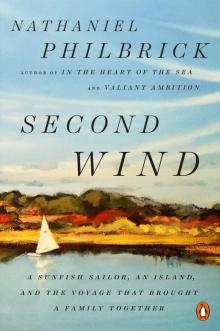 Second Wind: A Nantucket Sailor's Odyssey
Second Wind: A Nantucket Sailor's Odyssey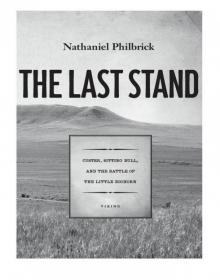 The Last Stand: Custer, Sitting Bull, and the Battle of the Little Bighorn
The Last Stand: Custer, Sitting Bull, and the Battle of the Little Bighorn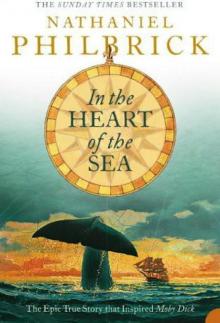 In the Heart of the Sea: The Epic True Story That Inspired Moby-Dick
In the Heart of the Sea: The Epic True Story That Inspired Moby-Dick Away Off Shore: Nantucket Island and Its People, 1602-1890
Away Off Shore: Nantucket Island and Its People, 1602-1890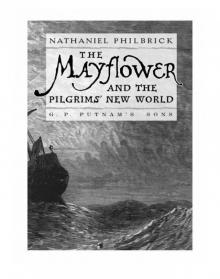 The Mayflower and the Pilgrims' New World
The Mayflower and the Pilgrims' New World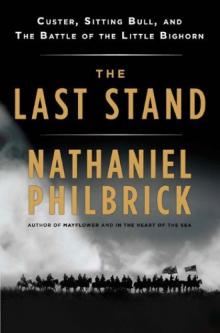 The Last Stand: Custer, Sitting Bull and the Battle of the Little Big Horn
The Last Stand: Custer, Sitting Bull and the Battle of the Little Big Horn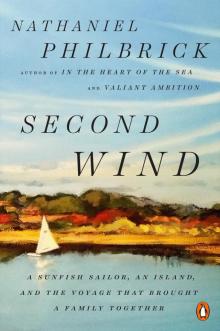 Second Wind
Second Wind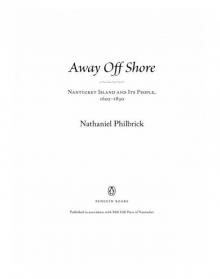 Away Off Shore
Away Off Shore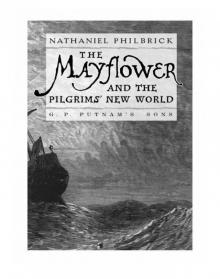 The Mayflower and the Pilgrims' New World*
The Mayflower and the Pilgrims' New World*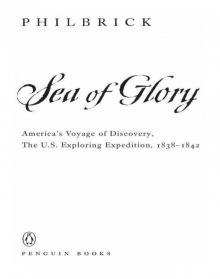 Sea of Glory
Sea of Glory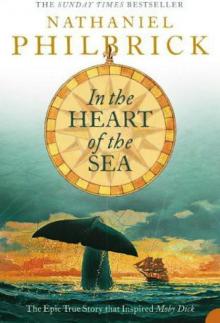 In the Heart of the Sea
In the Heart of the Sea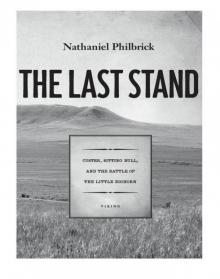 The Last Stand
The Last Stand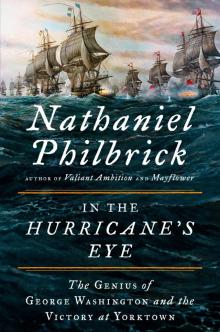 In the Hurricane's Eye
In the Hurricane's Eye